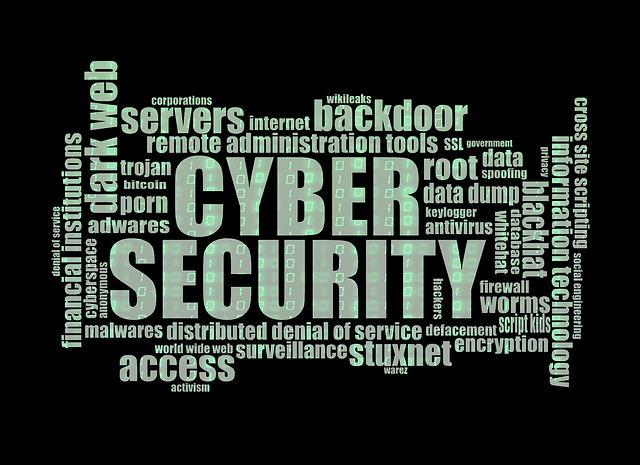Cyber insurance is a critical tool for businesses operating online, providing protection against data breaches, ransomware, and phishing attacks by covering response costs, legal fees, business interruption, and ransom demands. With cyber threats on the rise, this insurance acts as a financial shield, aiding recovery, minimizing damage, and safeguarding digital assets. Policies include data breach coverage for notification, monitoring, and damage control, plus business interruption coverage for lost revenue and restoration costs. When choosing a provider, research risk profiles, compare quotes, and follow an efficient claims process in case of an incident. Despite initial costs, cyber insurance offers peace of mind and significant advantages by mitigating risks, protecting against legal liabilities, and ensuring operational continuity. Combining insurance with proactive security measures creates a robust defense strategy for today's digital landscape.
In today’s digital era, cyber insurance has become an indispensable asset for businesses worldwide. With the ever-evolving threat landscape, understanding comprehensive cyber coverage is crucial to safeguard against escalating risks. This article serves as a comprehensive guide to demystifying business cyber insurance. We’ll explore what it covers, dissect common cyber threats, break down key policy components, and provide insights on choosing the right provider. Additionally, we’ll delve into claims processes, cost-benefit analyses, and best practices for enhancing security beyond policy limits.
Understanding Cyber Insurance: What It Covers and Why It Matters

In today’s digital era, cyber insurance has become an indispensable tool for businesses navigating an increasingly complex online landscape. This type of insurance safeguards against a wide range of potential risks, from data breaches to ransomware attacks and phishing scams. By covering costs associated with incident response, legal defense, business interruption, and even ransom demands, cyber insurance acts as a financial shield, helping businesses recover swiftly and minimize damage.
The significance of cyber insurance cannot be overstated, given the escalating frequency and sophistication of cyber threats. It allows businesses to protect their digital assets, maintain customer trust, and ensure operational continuity. Moreover, it provides peace of mind by offering proactive risk management solutions, enabling companies to stay focused on growth and innovation rather than crisis management.
The Evolving Threat Landscape: Common Cyber Risks for Businesses

In today’s digital era, the threat landscape for businesses has evolved significantly with a surge in cyber risks. As more operations shift online, from financial transactions to customer data storage, companies become increasingly vulnerable to sophisticated cyberattacks. Common threats include ransomware, phishing scams, and DDoS (Distributed Denial of Service) attacks, which can cause substantial financial loss, disrupt business continuity, and damage an organisation’s reputation.
Cybercriminals are always developing new techniques, making it a challenge for businesses to stay ahead. Data breaches, for instance, have become more frequent and severe, with hackers targeting sensitive customer information. Additionally, the rise of remote work has expanded the attack surface, as employees access company networks from various locations, potentially introducing security risks that traditional on-site setups didn’t face. Therefore, having robust Cyber Insurance is no longer a consideration but an indispensable necessity for businesses to mitigate these evolving cyber risks.
Key Components of Business Cyber Insurance Policies

Business Cyber Insurance policies are designed to protect against financial losses and damage caused by cyber threats. Key components include data breach coverage, which compensates for expenses related to notification, credit monitoring, and legal fees when sensitive data is compromised. This component ensures businesses can effectively manage the fallout from a breach, minimizing reputational damage and potential legal liabilities.
Another critical element is business interruption coverage, which provides financial support during downtime caused by a cyberattack. This includes lost revenue, extra expenses to continue operations, and the cost of restoring systems and data. By including these provisions, Cyber Insurance helps businesses recover swiftly and maintain continuity in their operations, even after facing significant cybersecurity incidents.
How to Choose the Right Cyber Insurance Provider

When selecting a cyber insurance provider, thorough research is key. Start by understanding your business’s unique risk profile and specific needs. Each company operates in different sectors with varying levels of data exposure, so an ideal insurer will offer tailored policies. Look for providers who specialise in cyber security and have expertise in your industry.
Check their coverage options, exclusions, and limitations to ensure they align with your requirements. Consider reputation and financial stability as well; you want a provider who can honour claims. Reviews from existing clients can provide valuable insights into the insurer’s reliability and customer service. Compare quotes from multiple providers to find the best balance between comprehensive coverage and affordable premiums.
Claims Process and Incident Response: Your Guide to Recovery

When a cyber incident occurs, having a smooth and efficient claims process is vital for business recovery. Cyber insurance provides a dedicated line of support during such challenging times. The claims process typically begins with notifying your insurance provider as soon as possible after discovering the breach. They will guide you through the initial assessment, helping to identify the scope of the incident and potential impact on your operations.
Effective incident response involves containing the damage, erasing or securing any compromised data, and conducting a thorough investigation. Your cyber insurance policy may cover forensic investigations and legal fees associated with responding to the incident. By following the provider’s protocols and gathering evidence meticulously, businesses can expedite the claims process, ensuring faster recovery and reduced downtime.
Cost and Benefits Analysis: Justifying the Investment in Cyber Insurance

Cyber insurance has become an indispensable investment for businesses navigating the digital landscape. While the initial cost may seem steep, a thorough analysis reveals its profound benefits. By assessing potential cyber risks and their financial implications, companies can justify this expense as a proactive measure to safeguard their operations. Cyber attacks can lead to significant data breaches, legal liabilities, and disruption of business continuity, all of which incur substantial costs.
The value of cyber insurance lies in its ability to mitigate these risks. It provides financial protection against the growing array of cyber threats, ensuring that businesses can recover swiftly and effectively. This investment is a strategic decision that offers peace of mind, knowing that an organization’s digital assets are secure and any potential losses are covered, thereby fostering a resilient business environment.
Best Practices for Staying Secure Beyond Insurance Coverage

Staying secure goes beyond simply having Cyber Insurance. Businesses should implement robust security measures like regular software updates, employee training on phishing awareness, and strong password policies to minimize risk. Additionally, conducting routine security audits and implementing multi-factor authentication adds layers of protection against potential cyber threats.
By combining insurance coverage with proactive security practices, businesses can create a comprehensive defense strategy. Regularly reviewing and updating these measures is crucial, as cyber threats evolve rapidly. Staying ahead of emerging trends and vulnerabilities ensures that your business remains resilient in the face of evolving cyber risks.
